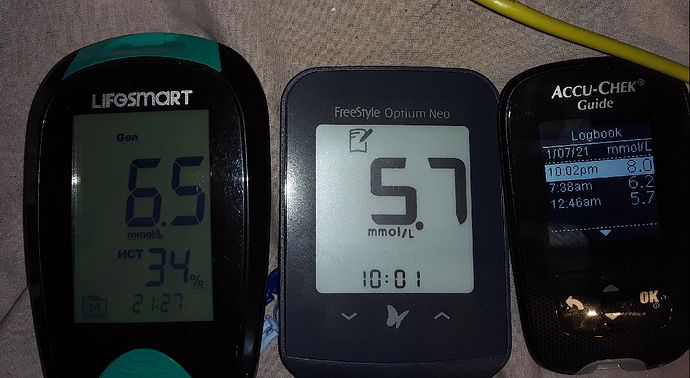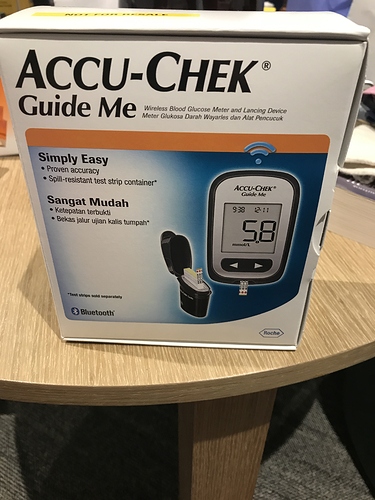Yeah thanks for being helpful in your reply.
I did the test by setting up the meters with their strips, and then doing ONE big drop of blood and sampling it with all three meters.
AND the lancette - I reuse the old one, repeatedly with a flush of isopropyle alcohol after each use.
I can’t stand the idea of churning through vast amounts of them, when the needle is essentially good for a few thousand insertions.
ALL the meters are essentially NEW-ish and the combined use between the three of them, makes them get a 3 x a day use for about 2 or 3 weeks each.
I have also sent a report to the info@ndss.com.au, and the admin@diabetesaustralia.com.au, about this issue.
I would not mind if all the readings (making this up) averaged say 6.0 - with the lowest at 5.95, then 6.0 and then 6.05 (yes 2 decimal places - but you get my intent) - but the three readings coming in at 5.7, 6.5 and 8 - that is a spread of 2.3 between all the readings - and this is just bullshit, AND it’s potentially REALLY dangerous bullshit.
OK I have set my span from 5 to 6 mml/L with a tolerance of minus 1 (4 mml/L) to plus 2 (8.0 mml/L).
With the LOW blood sugar levels, I will accept down to 4 -ish as a short term temporary drop in the early part of the day, as below this is getting into Hypoglycemic territory = 3.5 mmol/L and below = coma and possibly death. But I will not go down to four in the evening. A feed of complex carbs (tinned lentil soup) is a good antidote and no insulin is the go.
But what if the reading is say 4.2 and the actual level is 1.9?
Or it’s “within range” at 5.0 and the real level is 3.8?
I know about the issues of “Oooo I am getting very tired” and it’s coming on within 20 to 30 minutes, “Time for a few boiled lollies and a decent meal”.
I mean “WHO am I to trust?”
The Chinese with their dubious “knock off’s and fakes” industry or the Germans with their nit picky issues for quality.
This documentary is DISTURBING - not because my hand bag, wig and dresses are fakes, but for the medical side of things… People are dying from garbage fake medical products.
Counterfeiting:The Business of Counterfeits and Knock Offs - Documentary Guru
You can use this site to archive important videos.

